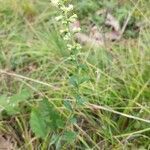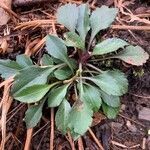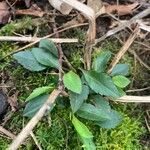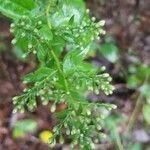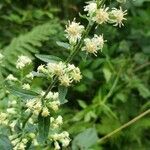Plants 20–100 cm; caudices branching. Stems 1(–5), erect, usually branching only in array, moderately to densely hispido-villous. Leaves: basal and proximal cauline tapering to winged petioles, blades oblanceolate to ovate, 35–210 × 15–50 mm, margins serrate or crenate, apices acute, sparsely to moderately soft hispido-villous, more densely so on abaxial nerves; rosettes on rhizome branches sometimes present at flowering; mid and distal cauline sessile, blades elliptic, 15–50 × 5–15 mm, distally reduced, margins entire. Heads 12–270 (1–15 per branch) in usually wand-shaped paniculiform arrays , of short axillary and terminal racemiform, non-secund clusters, sometimes proximal branches elongated, ascending and bearing short axillary and terminal racemiform clusters. Peduncles 1.5–2.5 mm, hispido-villous to canescent. Involucres campanulate, 3–5 mm. Phyllaries in 3–4 series, appressed, strongly unequal, oblong, margins white, scarious, apices obtuse to rounded. Ray florets 7–9 (white); laminae 3.5–4 × 1–1.5 mm. Disc florets 9–12; corollas 3–4 mm, lobes 0.6–1.2 mm. Cypselae (narrowly obconic) 1.5–2.5 mm, smooth or with 5–8 narrow, darker, sunken striations, glabrous or sparsely strigose; pappi 2.5–3.5 mm (sometimes strongly clavate). 2n =18.
More
Much like no. 8 [Solidago hispida Muhl.], but with white or whitish rays; invol 3–5 mm, its bracts whitish or light straw-colored except for the generally well defined light green tip; 2n=18. Dry woods and open, often rocky places; N.S. and Que. to Wis., s. to Ga. and La. Hybridizes with nos. 8 [Solidago hispida Muhl.] and 10 [Solidago erecta Pursh].
